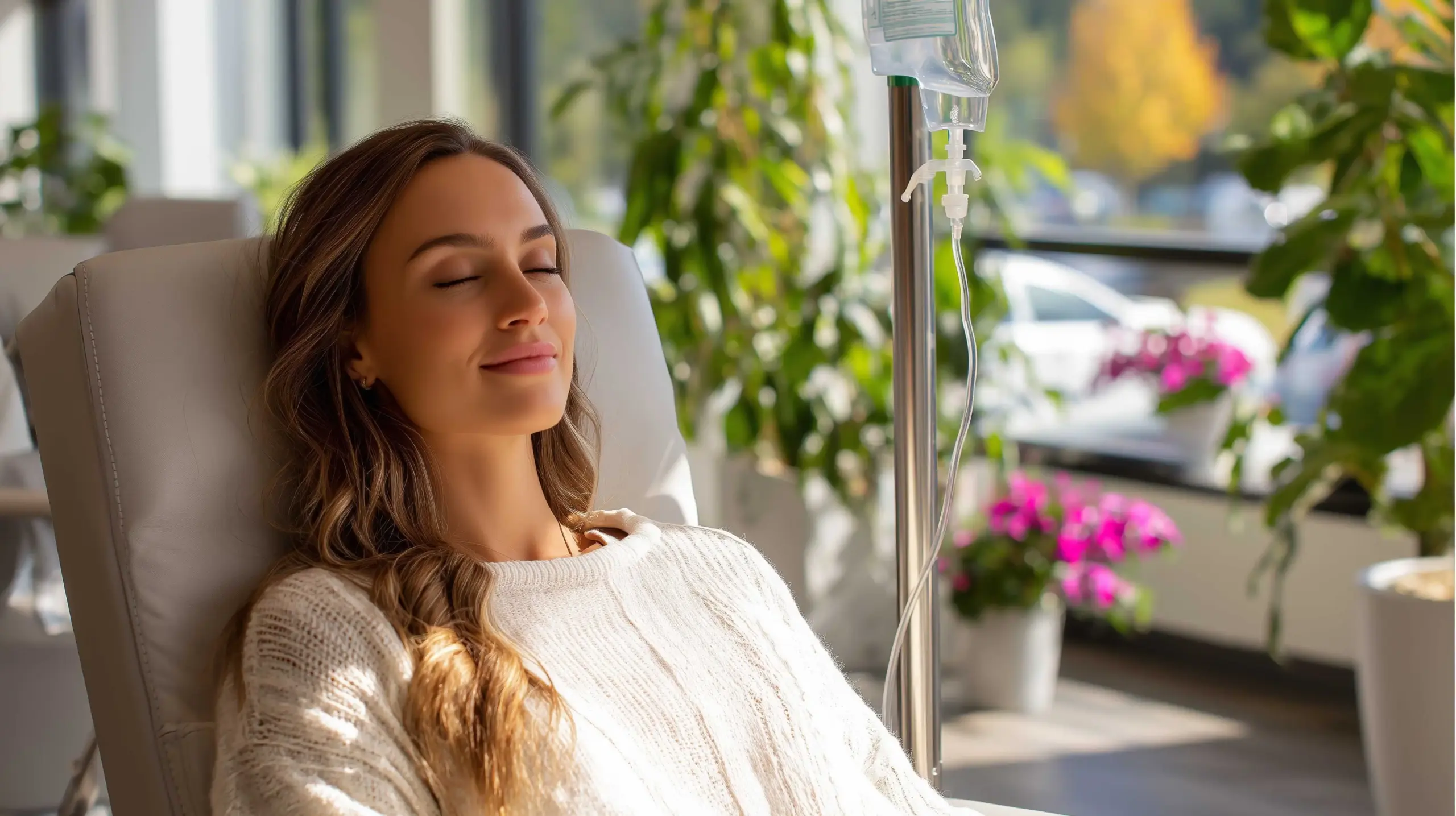Table of Contents
If you’ve been feeling unusually tired, noticing changes in your mood, or struggling with low libido, you’re not alone. Low testosterone, often called “Low T,” affects millions of men, especially as they age. Yet, many aren’t sure what’s considered normal, what could signal a problem, or how to address it.
At Ravissante Health and Wellness, we believe men deserve clarity and support when it comes to their hormonal health. In this guide, we’ll explore what testosterone does, why levels decline, common symptoms to watch for, and treatment options that can help you feel like yourself again.
What Is Testosterone and Why Does It Matter?
Testosterone is the primary sex hormone in men, produced mainly by the testicles. While it’s often associated with sex drive, its impact is much broader. Healthy testosterone levels support:
- Development of male sexual characteristics (voice deepening, body hair, genital growth during puberty)
- Maintenance of muscle mass and strength
- Bone density and fracture prevention
- Regulation of fat distribution
- Fertility and sperm production
- Mood stability and cognitive function
When levels drop below a healthy range, these processes can be disrupted.
How Common Is Low Testosterone?
Low testosterone becomes more prevalent with age. In fact:
- About 2%–4% of men under 40 have clinically low levels.
- Up to 39% of men over 45 experience low testosterone.
- Rates climb even higher in men with certain health conditions, including obesity and diabetes.
Many men attribute their symptoms to “just getting older” and never get tested—meaning the true prevalence may be even higher.
What Causes Low Testosterone in Men?
There are several reasons testosterone may decline:
1. Natural Aging (Andropause)
As men reach their 30s and 40s, testosterone production naturally starts to taper off by about 1% per year. This gradual decline is sometimes called andropause.
2. Medical Conditions (Hypogonadism)
Some men have primary hypogonadism, where the testicles themselves don’t produce enough testosterone. This can be due to:
- Genetic conditions (like Klinefelter syndrome)
- Testicular injury
- Infections or autoimmune diseases
Secondary hypogonadism, caused by problems in the pituitary gland or hypothalamus, can also disrupt production.
3. Obesity and Metabolic Issues
Carrying excess weight—especially belly fat—can interfere with hormone balance. Fat tissue can convert testosterone into estrogen, further lowering levels.
4. Diabetes
Type 2 diabetes damages blood vessels and nerves in the testes, impairing testosterone production.
5. Certain Medications
Opioid painkillers, steroids, and some antidepressants can reduce testosterone as a side effect.
6. Chronic Illness and Stress
Severe illness, untreated sleep apnea, or high chronic stress can suppress hormone production.
Signs and Symptoms of Low Testosterone
Low testosterone symptoms can affect your body, emotions, and sex life. Here’s what to watch for:
- Reduced sex drive: One of the most common complaints is a drop in libido.
- Erectile dysfunction: Testosterone is needed to maintain erections. Low levels can make it harder to achieve or sustain them.
- Fatigue: Even after a full night’s rest, you may feel exhausted.
- Loss of muscle mass: Weight gain and decreased strength can occur.
- Bone thinning: Low testosterone contributes to weaker bones and higher fracture risk.
- Mood changes: Depression, irritability, and trouble concentrating are frequent.
- Infertility: Sperm production may decline, impacting fertility.
If you’re experiencing several of these symptoms, testing your testosterone is worth considering.
How Low Testosterone Is Diagnosed
Diagnosing Low T starts with a thorough medical history and a physical exam. Your provider will ask about:
- Your symptoms and when they began
- Any medications you’re taking
- Lifestyle factors (stress, weight, alcohol use)
The most definitive step is a blood test, typically performed in the morning when testosterone peaks. If your results are low, your provider may recommend repeating the test or additional imaging to look for underlying causes.
Treatment Options for Low Testosterone
Treatment is highly individual. What’s right for one man might not be appropriate for another. Here are common approaches:
1. Testosterone Replacement Therapy (TRT)
TRT is the most well-known treatment, designed to restore testosterone levels to a healthy range.
Options include:
- Injections: Typically given every 2–4 weeks in a medical office.
- Gels and creams: Applied daily to the skin for steady absorption.
- Skin patches: Worn on the body and replaced regularly.
- Pellets: Implanted under the skin every few months for continuous release.
Benefits: Many men experience improvements in energy, sex drive, muscle strength, and mood within weeks.
Considerations: TRT isn’t for everyone. It can suppress natural testosterone production and may increase risks of certain conditions (like blood clots or prostate issues). You’ll need close monitoring by your healthcare provider.
2. Lifestyle Changes
Lifestyle improvements can make a surprising difference in testosterone levels:
- Lose excess weight: Shedding belly fat can naturally boost production.
- Exercise regularly: Weight training and high-intensity interval workouts are especially beneficial.
- Reduce stress: Chronic stress elevates cortisol, which can suppress testosterone. Practices like meditation, yoga, and mindful breathing can help.
- Sleep well: Aim for 7–9 hours of high-quality rest each night.
These changes also support better cardiovascular and metabolic health.
3. Address Underlying Conditions
If low testosterone is caused by obesity, sleep apnea, or diabetes, treating those conditions can help normalize hormone levels without direct hormone replacement.
Is Low Testosterone Treatment Right for You?
If you’re considering treatment, it’s important to weigh the benefits and risks. Some men find that modest lifestyle adjustments are enough to improve symptoms. Others may need medical therapy to feel their best.
At Ravissante Health and Wellness, our team takes a personalized approach to hormone health. Our team offers comprehensive evaluations, expert guidance, and evidence-based treatments tailored to your goals and health history.
Take the First Step Toward Reclaiming Your Vitality
You don’t have to accept fatigue, low mood, or diminished sex drive as “just part of getting older.” If you suspect you may have low testosterone, schedule a confidential consultation with our caring team.
Ravissante Health and Wellness is here to help you understand your options and create a treatment plan that restores your vitality, naturally and safely.Ready to learn more? Contact us today to book your hormone replacement therapy consultation and take the first step toward feeling like yourself again.







